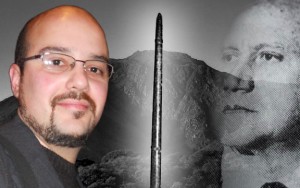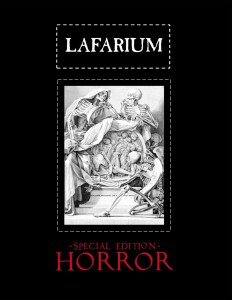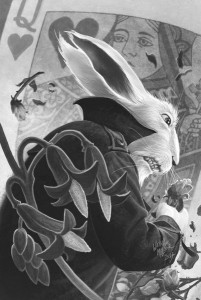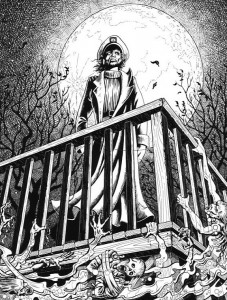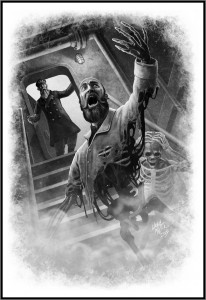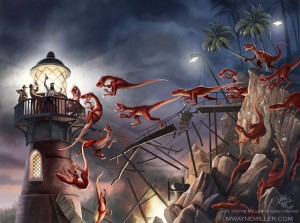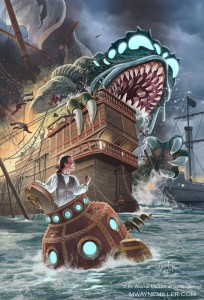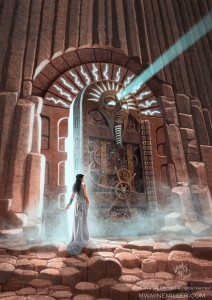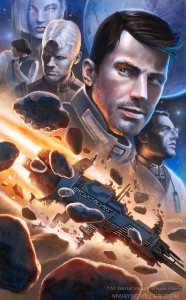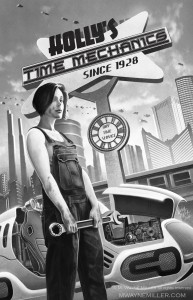We’re delighted to be joined today by an outstanding and award-winning illustrator of what we loosely term ‘the weird’, John Coulthart. We glide through artistic techniques and influences, discussing John’s cracking website, his own writing, Lovecraft and Ligotti along the way. And we have an exclusive view of the original cover design for his Axiom project. It doesn’t get much better (unless you were hoping for a photograph of Django running into a tree).
We would say something else nice and introductory about John, but really the interview and the art tell you what you need to know. So let’s just do this thing…
greydog: Welcome to greydogtales. For once we’re not sure where to start. Not only do you produce striking illustrations, but you also write, and you provide a website packed with fascinating articles, weird trivia and the work of other illustrators. Do you see yourself as an artist with sidelines, or a multi-media person?
coulthart: Art has always been the dominant thing, and it’s how I make a living, but I realised I enjoyed writing when I was about 9 or 10, and that I had some facility for it. The first thing I had published in any form was a poem in the local newspaper when I was 10. In secondary school I won the art prize but a year or so later I was thinking seriously about getting fiction published somewhere. I’d been writing and illustrating a lot of derivative fantasy stuff, and working on a novel that never got very far because I kept writing and rewriting the first few chapters. Shortly after that I was creating album artwork for Hawkwind but also writing another novel, a wildly uncommercial thing that was almost wholly dream sequences and “experimental” prose. I only stopped the writing when I started adapting the Lovecraft stories since that was a very labour-intensive process. I’d also realised by that point that I needed to think more seriously about why I wanted to write fiction when things were going well art-wise.
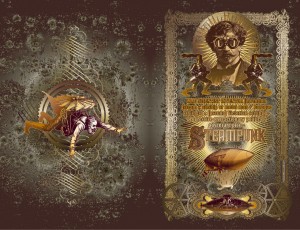
greydog: For some people, achieving a blog like feuilleton would be enough in its own right. It’s like greydogtales, but produced by someone who knows what they’re doing (greydog is an unrepentant grasshopper, and about as complex). Is the multi-layered nature of feuilleton a reflection of your own personality, or are we reading too much into it?
coulthart: Ha, I didn’t know what I was doing at all when I started. The thing appeared on a whim after someone asked me to helped them put a website together. I installed a database and WordPress so they could have a blog/news feature then realised a) that it was relatively easy to set up, and b) I could do the same for myself. It didn’t feel at all serious until 2007 when I wrote a lengthy piece one weekend about the album cover art of Barney Bubbles who I felt was under-represented on the web. That one post received a huge amount of attention, and led (indirectly) to a book of Barney’s work being published, and my name appearing in the New York Times. The discipline of making a daily post has helped hone my writing, at least where non-fiction is concerned. It’s also led to my being asked to write a few paid pieces for design magazines, something I never expected at all.
It’s very much a reflection of my personality since I don’t write about anything I’m not interested in. I like the flexibility of the form: you can write short or at great length or even only post links as I do each weekend; you can include visuals or videos or music mixes; and you control the platform more than you do in social media. I’ve found individual posts to be very useful for having a fixed statement or essay available in a public space. I’ve spent years telling people about David Rudkin’s TV play, Penda’s Fen, for example, but there’s no need to repeat yourself at length when you can send someone a link to something you’ve written.
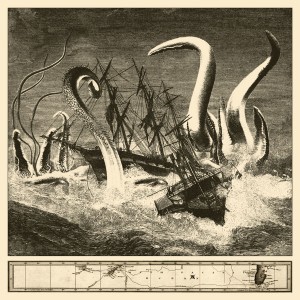
greydog: Penda’s Fen was our introduction to Manichean dualism (we don’t get to say that often) many years ago, and left a lasting impression. If you watch it as a teenager, it raises so much about your identity, your sexuality and your belief systems – and somehow indelibly writes Edward Elgar into the mix. Everyone should see it. And you’ve written at length about David Rudkin‘s work in the recent book Folk Horror Revival: Field Studies (link on sidebar).
Back to business. We’re asking all our feature artists something about the professional process, for those who don’t work in this field. You’ve undertaken a lot of commissions from publishers. How much creative freedom do you tend to get when executing a book cover?
coulthart: It depends very much on the publisher and art director commissioning the work, but most mid-range publishers, and all the big ones have specific ideas of the direction they want to see you following. Some novels make certain cover designs seem inevitable whereas others might suggest any number of different approaches; if the book is in the latter category then it helps to have someone dictating the direction before you begin. The worst kind of job for a designer or illustrator is one where the client doesn’t know what they want but insists on guiding the project, or—worse—changes their mind once you’ve started work.
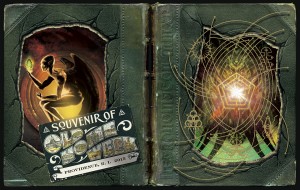
greydog: Often the first thing that we notice when we see a Coulthart piece is the amazing intricacy of your style. With something like the interior illustrations for The Haunter of the Dark, for example, how long would a single page/plate take to be completed?
coulthart: All those Lovecraft pages took around two weeks to draw which is why I stopped using such fine pens when I started work on the Lord Horror comics. At the time I only had one Rotring drawing pen which had a 0.2 mm nib. Rotring pens are expensive precision things, and I didn’t have the money to buy a set so I got used to shading with extremely fine lines. By the time I started on the Lord Horror comics I had a few more pens so I switched to 0.5 which is still a fine line but it halved the production time.
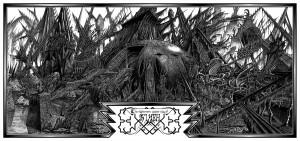
greydog: A number of your pieces remind us of the detailed work of Victorian and Edwardian illustrators. Gustave Doré springs to mind immediately. Is this an area you mine for inspiration, or an accidental reflection of earlier approaches?
coulthart: Yes, the atmosphere of Doré’s work was something I was aiming at when I began The Haunter of the Dark. I wanted to get away from the poor science-fiction art I’d been creating for Hawkwind, and also try and present Lovecraft’s stories pictorially with the same seriousness they had on the page. I dislike the EC style of horror comics with some chuckling host popping up at the end to crack a joke. The initial impetus came from Berni Wrighton’s Frankenstein portfolio which borrows from Doré’s Ancient Mariner in two of the plates. (He was actually working more in the style of Franklin Booth but I didn’t know this at the time.) Wrightson has done a lot of EC-style art but the Frankenstein drawings were intended as illustrations not comic panels. I’ve often said that my Lovecraft strips are really illustrated stories presented in a sequential form rather than comic-strip adaptations. I’ve never really considered myself to be a comic artist, I’m an illustrator who happened to choose the comics medium for those stories because it gave you access to every part of the story. The page layout and drawing style is much closer to European comics even though the subject is predominantly American.
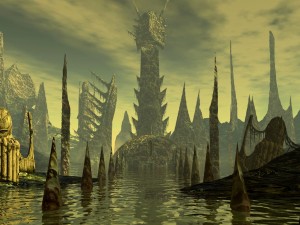
greydog: When it comes to artwork, from which single project of yours did you gain the most personal satisfaction, regardless of reception or remuneration?
coulthart: That would be Lord Horror: Reverbstorm, the collected (“graphic novel”) edition of the Lord Horror comics I worked on with David Britton during the 1990s. Reverbstorm was a once-in-a-lifetime opportunity to create a comic series that was excessive and transgressive knowing all the time that it would still be published. My ink drawing in Reverbstorm is the best I’ve done anywhere, while the comic itself throws Modernist literature (mostly Joyce and Eliot) and Cubist/Expressionist art into a soup of material from Burne Hogarth’s Tarzan comics and the cosmic horrors of Lovecraft and Hodgson. There’s never been anything in comics that offered these kinds of juxtapositions over so many pages.
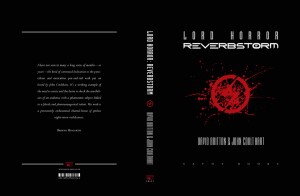
greydog: Let’s escape art for a moment. We grew up on the albums Hall of the Mountain Grill, Warrior on the Edge of Time and Michael Moorcock‘s New Worlds Fair, and you’ve done cover art for Hawkwind. Were you also interested in that musical ‘zone’, or was it just another job?
coulthart: Yes, I liked Hawkwind a great deal circa 1980, and I still like the albums they made in the 1970s. I also liked a lot of other music at the time that was more of its time – groups such as Cabaret Voltaire – but Hawkwind were attractive for the loose mythology that surrounded their albums and the group. A lot of the mythology was simply the product of Barney Bubbles’ sleeve designs so the combination of those two things – design and mythology – led me to start drawing a series of Hawkwind-related pictures. In the summer of 1980 I was lucky to meet someone who knew the band so that in turn led to my being asked to work for the group shortly after. This was a great opportunity at the time but it was also frustrating as I was trying to produce designs as well as illustrations but without having access to any of the facilities – or contact with the printers – that you needed to create graphic design. The disaffection – and dissatisfaction with my own work – pushed me to quit the album cover work and do something completely different which was the HP Lovecraft comics.
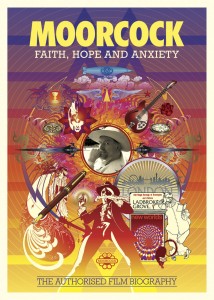
greydog: And we are, at heart, a blog about weird fiction, a term thankfully hard to define. Which written works in this field stand out most for you as a reader?
coulthart: There’s too many to choose so I’ll concentrate on man-of-the-moment Thomas Ligotti. I dug out my old copy of Songs of a Dead Dreamer before the new Penguin edition came out, and I’ve recently read Teatro Grottesco and Grimscribe, neither of which I’d read before. A lot of contemporary genre writing bores me because it reads the same: too many authors whose unobtrusive prose styles would render them indistinguishable from each other if you removed the names from their stories in a collection. You can’t say this about Ligotti: his prose and his obsessions are as immediately recognisable as a few seconds of animation by the Brothers Quay. Grimscribe is good but Teatro Grottesco is even better, and is essential reading. It’s disgraceful that books of his are currently out of print but then this was the case with Robert Aickman for many years, and it’s still the case with other exceptional writers.

greydog: The author Ted E Grau, who we interviewed here last week, is also a huge Ligotti fan. Tell us about your own fiction. You’ve written a number of short pieces, both fiction and critical reviews, and you have a long term project, Axiom, on which you’ve been working for some time. Do you have a specific ambition as regards your writing?
coulthart: At the moment the ambition is to get my two novels published. Since 2001 I’ve been labouring on the Axiom project which has become quite a substantial thing although little of it has been made public. When you have a career in one medium it can seem like folly to be trying to pursue a separate career in another but as I said earlier, I’ve been writing fiction for years. The difference this time is that the new work is the first I’ve produced that I was at all satisfied with. The Axiom project emerged after I’d finished work on Reverbstorm: I’d spent several years collaborating with other people and wanted to return to creating something substantial of my own. Reverbstorm has an invented city as its location, and it was while working on that I realised that taking this in a different direction would give me something that reflected my own interest in real or imaginary cities, in architecture and so on.
So the first novel, Axiom, establishes a setting for a proposed series of works in different media. The frame is such that this could support a narrative with few (or no) generic features, or something that was full-on cosmic horror. A city always is a useful device if you want to tell a variety of stories, and there are many fictional precedents. Axiom (the novel) is four connected narratives that describe a year in the life of the city, the tone being dark fantasy grading to horror. I have an agent who’s tried the book with all the main UK genre imprints, including a number of places I wouldn’t have considered if I’d been sending it out myself. We did get an offer from one UK publisher, and things had reached the contract stage when they promptly went into receivership. I’ve been surprised by some of the reactions towards the sexual content: this, more than anything else, seems to have been a problem for the book being accepted. It sounds ridiculous in 2015 to say you’re being rejected on account of this but that’s what we’ve been told. One of the reactions made me wonder whether they’d read any Ballard or Barker or Burroughs. This situation has been a surprise mainly because I don’t regard what I’ve been writing as being particularly transgressive, it’s just that one of the things I’ve been exploring (which was also touched on in Reverbstorm) is what I call the Eros of the Monstrous, in other words giving your abominations a sexuality. It’s evident that some people aren’t keen on this but it’s a subject that interests me, and I’ve been working on new art and writing that explores this further.
Another stumbling block seems to have been working in an area which (to me) is midway between the genre world and the literary world. I like these hybrid zones wherever they occur but the business of publishing isn’t always encouraging of things that don’t easily fit their boxes. We took a similar approach with Reverbstorm which I’ve called a psychopathology of heroic fantasy: the trappings of adventure comics were present throughout, especially references to Burne Hogarth’s Tarzan, but the narrative veers continually away from this into Modernist styles and techniques. This is the perfect way to limit your audience: you alienate the people who want the swashbuckling adventure stuff, and you get little interest from the art crowd who are put off by the vulgarity elsewhere.
The second novel in the Axiom project, Vitriol, is a 217,000-word doorstop featuring invented psychedelic drugs, sword fights, occult rituals, para-dimensional monstrosities, an alchemist war, and a great deal of gay sex. We had a very nice rejection for this one from a major UK publisher who said they loved the book but didn’t think it was commercial enough. I’m hoping this isn’t the consensus as I spent seven years writing Vitriol, creating the kind of book I’d want to read myself but which I couldn’t find on the shelves; on that level it’s the most satisfying thing I’ve done, and it’s also a better novel than the first one. Many people have assumed I’d opt for self-publishing these novels which is still an option – I design books, after all – but publishers have the advantage of marketing and distribution. In the meantime, I’ve been working on material for a new Axiom book that will combine short pieces of fiction with graphics, and also thinking about a new novel.
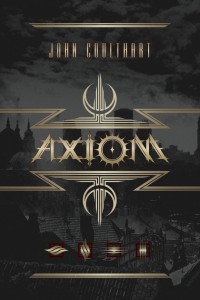
greydog: We can only wish you good fortune on the whole Axiom venture. As we grew up reading Burroughs and books like Samuel Delany‘s Dhalgren (pretty wild for teens from a small Yorkshire town) it seems retrogressive that sexual content in this sort of fiction should be a block.
Now, we love discovering new illustrators of the weird. Can you suggest someone else working today who stands out to you, someone with whom we might not be familiar?
coulthart: I think you may already know Santiago Caruso’s exceptional art (http://www.santiagocaruso.com.ar/). His finely-detailed Lovecraftian pieces were one of the highlights of the NecronomiCon art show in Providence in August. Elsewhere I’ve been impressed by Caitlin Hackett’s surreal fairytale drawings (https://caitlinhackett.carbonmade.com/projects/3016488), Jason Grim’s disturbing self-portraits (http://www.jasongrimart.com/#!photography/c24t1), Alison Scarpulla’s mysterious photographs (https://www.flickr.com/photos/aliscarpulla/page2), and Cristina Francov’s strange paintings (http://www.cristinafrancov.com/en-galeria-obras-selectas.html).
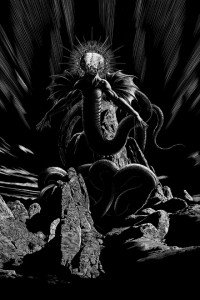
greydog: Glad you mention Santiago Caruso. His work is particularly stunning, and we’re currently obsessing on the range of fine South American illustrators (see earlier Sebastian Cabrol post). We hope to have more of them on greydogtales in due course. So what other Coulthart project(s) can we look forward to seeing in 2016?
coulthart: On the shelves at the moment there’s The Gods of H P Lovecraft, a collection of new stories from JournalStone Publishing, edited by Aaron French. I illustrated six of the stories, each of which concerns a different Lovecraftian creature or entity. Also out in January (I guess, because I haven’t been given a release date) is a book design for a large US outlet that I’m not saying much about at the moment since I want it to be a surprise. But it’s going to be a lavish production so I’m looking forward to seeing it. And I’ve just received a commission for another project that will have to remain mysterious but this will be an alternate history by a well-regarded author scheduled for release in late 2016. Further off, I’ve agreed to illustrate William Hope Hodgson’s The House on the Borderland for Swan River Press. There’s no schedule established for that one but I’m planning on starting work in the New Year.
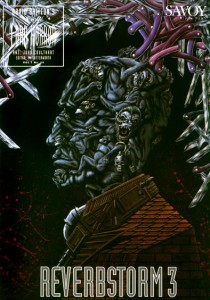
greydog: Thank you so much, John Coulthart. We highly recommend John’s website, feuilleton, which is a miscellany of thoughts and wonders, and can be found through this link:
(Of course, we also highly recommend that you check out some of the previous posts mentioned on greydogtales as well, but our site is better described as a bucket of things we tripped over when trying to avoid the dogs. Interviews with Ted E Grau and Sebastian Cabrol can be found by checking on the left.)
Apart from The Gods of H P Lovecraft, you may also want to have a look at John’s Haunter of the Dark book while you’re browsing. The UK link is on the right-hand sidebar:
In but a few days we bring you one of our finds of this autumn – a heavily illustrated feature on the terrific Danish folklore/folk-horror artist Jorgen Bech Pedersen. We’ll try to fit some more longdogs in before the end of December. And we might have a few days off, you never know…
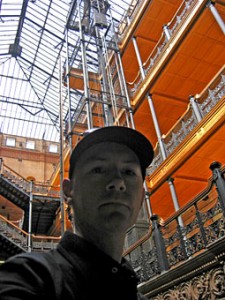
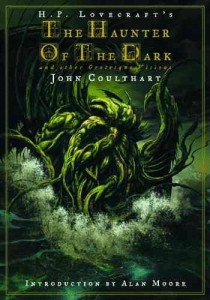 Haunter of the Dark US
Haunter of the Dark US

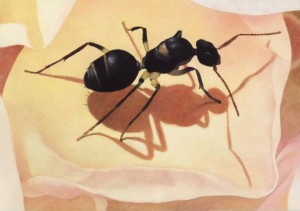
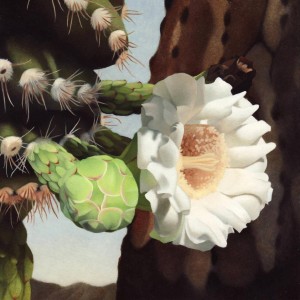
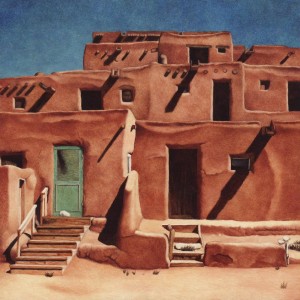
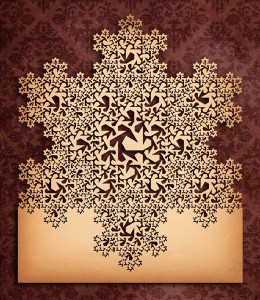
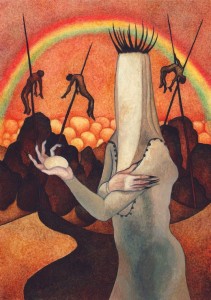
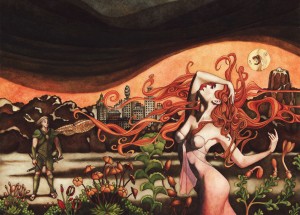
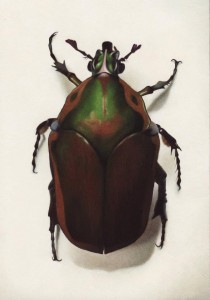

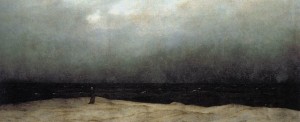 alone with alone
alone with alone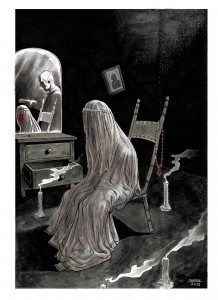
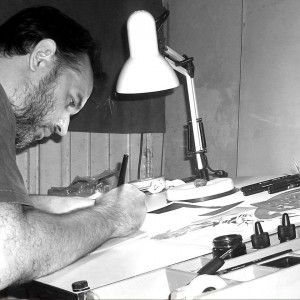
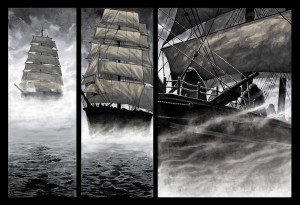
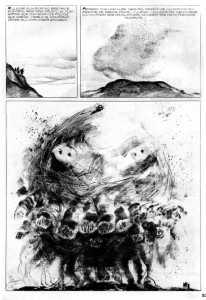
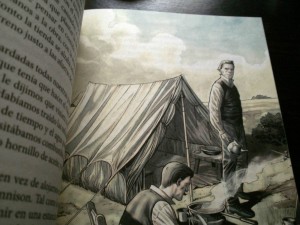




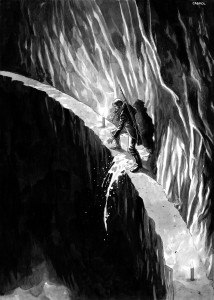

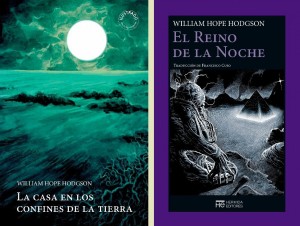 hermida editores – william hope hodgson
hermida editores – william hope hodgson